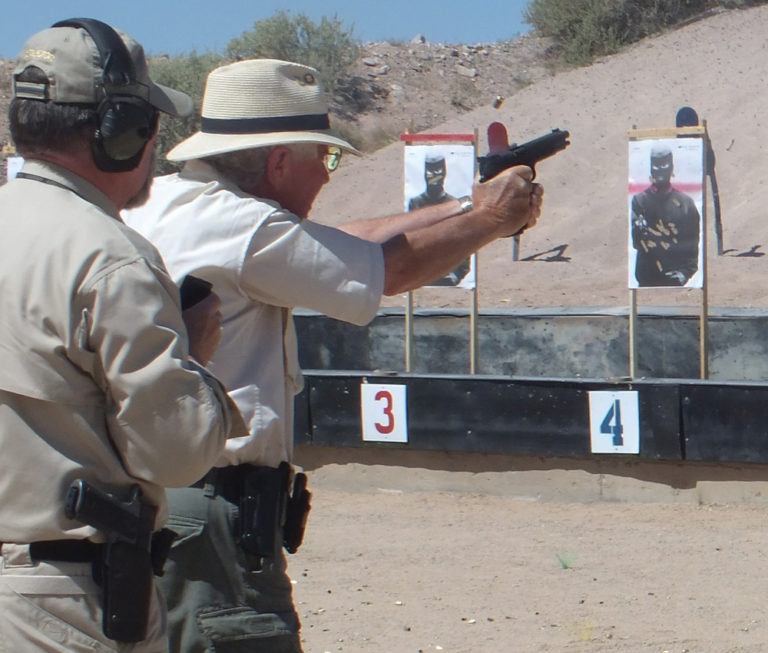
Buying a gun and ammo is just the first small step. Perfecting your skills and nerve in a threatening situation is key to your safety. Concealed carry training will get you there.
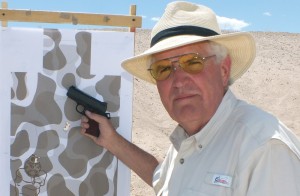
While choosing and carrying an effective firearm is important, the time and effort you spend learning to properly operate that firearm will probably pay more dividends in effectiveness should you ever have to use it. To be effective, you must be completely comfortable with every aspect of putting your concealed carry gun to use.
You should be so familiar and comfortable that you can draw, shoot, clear malfunctions and reload without consciously thinking about what you’re doing. If you have to use conscious thought to accomplish these tasks, your ability to defend yourself is diminished, because as a concealed carry citizen, you only have the right to use deadly force when you literally fear for your life or the life of someone else, and fear almost always diminishes performance.
Even low pressure situations like competing in an organized shooting competition degrades the performance of most people. That stress level will be ratcheted up tenfold should your life be in danger. For the best performance, there’s no substitute for confidence, and regular practice generates that level of confidence while developing the motor skills necessary for performance under stress.
When you get in your car to drive to the grocery store, you know you have to step on the brake to allow the car to be shifted into drive. You don’t think about this process, it just happens as a conditioned response to achieve the goal of making the car go forward. When you first learned how to drive, you had to consciously think about the process of stepping on the brake before it could be shifted into drive. Most likely, you tried to shift into drive without applying the brake and had to correct the sequence. After enough repetitions, the act of stepping on the brake before shifting became a normal part of your driving routine—so much so that you weren’t even aware you were doing it.
Had you been sitting in an open Jeep during those first days of learning to drive, and been charged by an angry grizzly bear, there’s a strong chance you’d have tried to start the car and shift into drive without applying the brake. Early in your driving career, your mind related the brake to stopping, and with the charging bear, your objective would be to go. There’s a possibility the bear might have eaten you when you didn’t shift into drive because you simply forgot to press the brake. This illustrates why, as an armed citizen, you must practice until operating your gun comes as naturally as driving your car.
Exploring Concealed Carry Holsters
- Concealed Carry Holsters for Women
- Best Concealed Carry Holster
- Best Pocket Holster – Options For Easy Everyday Carry
- Concealed Carry Shoulder Holsters – Best Up-Top Carry Options
- AIWB vs IWB Holster – Pros & Cons
- Concealed Carry Fanny Pack
Achieving Top Performance
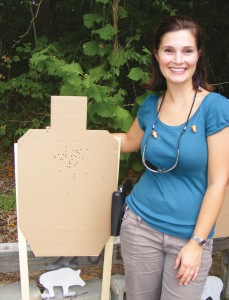
The best performance from humans always comes when we’re using non-verbal or operational thought. Verbal thought is when we work our way through a process using a mental checklist, such as mentally checking off the act of pressing the brake before putting a car into gear. New shooters must use a mental checklist in order to master the fundamentals. The sooner the new shooter shifts from mental-checklist thinking to conditioned-response thinking, the sooner that shooter will progress.
While it’s possible to shoot well using a mental checklist, it’s not possible to shoot well while shooting fast because our brains simply don’t run that fast when processing a mental checklist. Operational thinking allows you to group sets of actions into one thought command and allow fast response. Instead of thinking grip, stance, breath, sight picture, trigger press and follow through, in checklist thinking, operational thinking just processes the thought, “shoot.”
Eventually, by conditioning the shooter’s response patterns, the process for firing a shot becomes: sweep jacket back, grip pistol, bring weak hand close to body, draw pistol and bring it to horizontal, bring the pistol to eye level and reinforce grip with weak hand, extend pistol, align sights on target and fire if the threat continues.
Practice and developing conditioned responses allows grouping whole sets of actions into single responses, and this is why it’s so important to learn to do things the correct way and do them that way all the time.
Proper practice doesn’t just involve the act of firing the shot. You can be a dead accurate shooter and still be totally unprepared for defending yourself against a bad guy because being able to manipulate your gun up until the second you fire the shot is just as important as accuracy when you fire the shot. Gear manipulation is as important as shooting.
The acts of safe gun handling, accessing your gun, clearing a malfunction and going through the loading process are just as important as marksmanship. All these tasks must be ingrained into your process to the point they don’t require conscious thought, and this should be done with your carry gun or with a gun that’s operationally identical.
For this reason, practice for the concealed carry citizen should be done in the same way that a person would fight back in the event of an attack. There’s no doubt that simple shooting practice improves your shooting skills. Competition is even more likely to improve skills because it stresses accuracy, speed or both, and because it adds a level of stress and performance anxiety to the equation. The action shooting games also teach the shooter how to deal with problems like malfunctions and handling complicated decisions while under the duress of time constraints.
Developing Your Skills
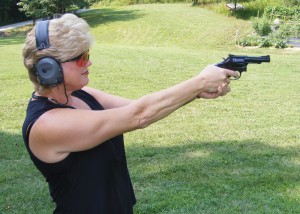
An example of this is something my friend and former Federal Air Marshal, Chris Cerino, experienced during the History Channel TV show, Top Shot. Chris was shooting a double-action revolver and a round failed to fire. Chris has extensive training with semi-auto pistols and most of his training work is training military, law enforcement and civilians with semi-auto pistols. When the revolver failed to fire, Chris tried to tap-rack the gun.
A tap-rack is the procedure of tapping the base of the magazine to make sure it’s seated and racking the slide to chamber a fresh round. Tap-racking a revolver does nothing since there’s no magazine to seat in the butt of the grip and no slide to work.
When this happened, the show’s host, Colby Donaldson, saw it and asked him, “Chris, did you just tap-rack a revolver?” Of course, he had. Chris was so conditioned to tap-rack when a gun failed to fire that the conditioned response was to tap-rack the revolver, even though all he had to do with a revolver was pull the trigger again. On a TV show, this is a source of entertainment; in a life or death situation it could be deadly. A lot of training with equipment other than what you use can cause conditioned responses you don’t want.
Choosing a quality instructor or training facility can be difficult because everyone in the business is certain he’s ultimately qualified to share his vast knowledge. I once set up at a gun show with a group of young military looking guys on the next aisle. Their booth was back to back with my booth and it featured videos of shooting scenarios with them moving around in tactical clothing. The production quality of the videos was very good and these guys looked like young Navy SEAL Special Forces operators. If you’re in close proximity to me, conversation will ensue, and I was shocked to find these guys weren’t law enforcement, past military or even competitive shooters. They’d taken the NRA instructors classes for shotgun, rifle and pistol and were setting up shooting classes with absolutely no practical experience at all.
There are shooting instructors across the country who apply SWAT or military tactics to concealed-carry citizen situations and train citizens in these techniques. SWAT or military training simply doesn’t apply to an armed citizen. Citizens have no right to attack the bad guys. In no state I know can civilians use deadly force to detain, much less attack, a criminal.
Our odds of having a gunfight with multiple bad guys are similar to those of winning the Powerball lottery. Tactical training of this type might be fun, but don’t fool yourself into thinking that shooting at multiple targets from a speeding vehicle is suitable training for the concealed carry citizen, and I’d advise a wide berth from someone who tries to tell you otherwise. If you want to do Zombie training, that’s fine, but it doesn’t relate to concealed carry. In the Zombie apocalypse, I plan to carry my 3-gun rifle with a high-cap shotgun and a double-stack .45 for backup. That would be impractical for concealed carry to say the least.
Expand Your Knowledge on Concealed Carry
- Best CCW Pistol [Range Tested]
- Best Women's CCW Handguns
- Best CCW Accessories – Must-Have Concealed Carry Upgrades
- Concealed Carry Insurance Comparison – Best CCW Insurance Options
- Best CCW Optic – Red Dot, Green Dot, or Iron Sights?
Two Paths To Follow
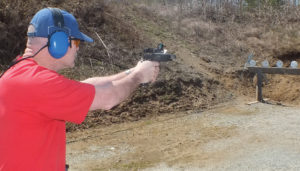 There are two types of firearms training—episodic training and immersion training. You can become a proficient shooter on your own with episodic training, but only if you learn to shoot properly in the first place. This can be done through videos and text, provided you have the ability to analyze your own performance critically.
There are two types of firearms training—episodic training and immersion training. You can become a proficient shooter on your own with episodic training, but only if you learn to shoot properly in the first place. This can be done through videos and text, provided you have the ability to analyze your own performance critically.
Many people simply don’t seem to have this ability, and as a result, they aren’t able to recognize their shortcomings and plateau at a point well below their potential. A better method is to train with a capable instructor who can critique your problems and help you correct them. Practicing on your own will accelerate your progress, provided you don’t fall back on your shortcomings when you’re not under the watchful eye of a good instructor.
Immersion training involves extended training over a full day or several days. This method will yield faster results, but unless you completely grasp the fundamentals and muscle memory involved, you’ll likely regress later. The best way is to begin with a period of immersion training and follow up with regular practice sessions and occasional episodes of training. Remember that many aspects of learning to shoot don’t need to involve live fire. Almost all national level shooting competitors dry fire and learn gear manipulation skills that don’t involve live rounds.
Concealed carry training should be done with the gun and holster or carry system you use every day. It should be done wearing the same kind of clothing you wear and be practiced both with winter and summer clothes. While it’s reasonable to say you can develop your own level of marksmanship and gun handling skills, I find this very rarely happens with most gun owners.
In reality, most people will progress much faster by spending time with a reputable trainer who shares a similar philosophy as they do. If you’re committed after study and consideration to daily carry with a small revolver, you’ll likely be frustrated with trying to learn with an instructor who advocates a full-sized, high-capacity semi-auto and considers anything less as lunacy. He may convince you to change; you certainly won’t convince him you’re plan is solid.
While the average armed citizen is better equipped to survive a violent crime than an unarmed citizen, a properly trained armed citizen is much more likely to perform well when it’s a matter of life or death. We can argue forever about what constitutes the best gun or caliber for concealed carry, but there’s simply no argument that a trained concealed carry citizen is far better equipped to deal with an adversary than an untrained one. Be sure you are among the trained.
This article appeared in the March 2015 issue of Gun Digest the Magazine. Click here to download the issue.
Also Check Out:
Though there is a focus on armed defense, fundamentals of security, evasion, barricading, and non-lethal defensive actions are also covered. Pincus stresses the importance of being safe and secure inside your own home, regardless of whether or not you choose to utilize a firearm for protection. Because this book is concept and principle based, the information provided can be practically applied to any home, apartment, or workplace, and any family size or budget. Get it here

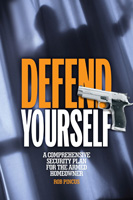
![Best Concealed Carry Guns In 2025 [Field Tested] Wilson Combat EDC X9S 1](https://gundigest.com/wp-content/uploads/Wilson-Combat-EDC-X9S-1-324x160.jpg)


![Best 9mm Carbine: Affordable PCCs [Tested] Ruger Carbine Shooting](https://gundigest.com/wp-content/uploads/Ruger-Carbine-Shooting-100x70.jpg)
![Best AR-15: Top Options Available Today [Field Tested] Harrington and Richardson PSA XM177E2 feature](https://gundigest.com/wp-content/uploads/Harrington-and-Richardson-PSA-XM177E2-feature-100x70.jpg)

It’s nice that you talked about how you must be completely comfortable with all aspects of putting your concealed carry gun to use in order to be effective. We just bought a gun for self-defense and we want to make sure that everything is in order so that we won’t get into any trouble about it. We should definitely attend a concealed carry certification course to show that we’re trying to abide by the rules.
https://www.firearmsafetygroup.com/concealed-carry.html